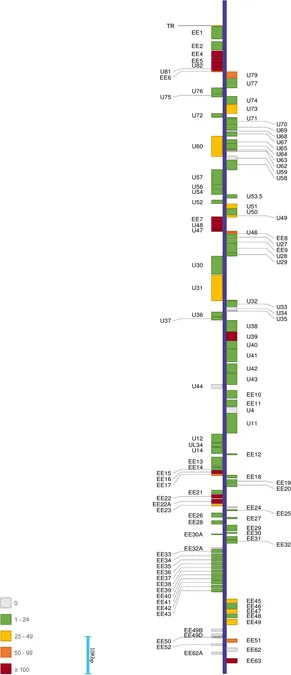
A Shocking Discovery: Fatal EEHV5 Infection Claims Life of Young Asian Elephant in Germany!
2024-09-16
Introduction
In a heart-wrenching incident that has alarmed wildlife enthusiasts and elephant conservationists alike, a 4-year-old male Asian elephant named Raj succumbed to a deadly infection caused by an extremely rare strain of elephant endotheliotropic herpesvirus type 5 (EEHV5) at Tierpark Hagenbeck in Hamburg, Germany. This distressing case marks the first recorded fatality linked to EEHV5 in continental Europe.
What is EEHV?
Elephant endotheliotropic herpesviruses (EEHVs) are notorious members of the herpesvirus family that pose a serious threat to both Asian (Elephas maximus) and African (Loxodonta africana) elephants, often resulting in severe hemorrhagic disease, especially in younger elephants. Since being first identified, EEHV has been documented in every continent where elephants reside, calling attention to the need for increased surveillance and research on its strains.
The Incident
The tragic case began on June 9, 2022, when Raj, who had been raised in captivity alongside his mother and siblings, was noted to demonstrate lethargy and exhibited a fever of 39°C. Despite receiving prompt treatment with antiviral medications, his condition deteriorated alarmingly, culminating in cyanosis of the tongue and severe blood abnormalities just one day before his untimely death.
Post-Mortem Findings
A thorough post-mortem examination revealed devastating internal conditions, including widespread hemorrhages affecting numerous organs—hallmarks of fatal EEHV infections. Histological studies displayed similarities to other known EEHV cases, yet surprisingly, viral inclusion bodies typical of herpesvirus infections were absent.
Genetic Analysis
The full genome sequencing conducted post-mortem confirmed the presence of EEHV5, leading scientists to unveil a significant number of genetic variants that differentiate it from previously recognized strains. Remarkably, 3,881 variants were identified compared to the already sequenced EEHV5 isolate "Vijay," raising questions about the strain's virulence and potential pathogenic mechanisms.
Concern for Captive Elephants
The alarming nature of this incident implies a broader concern for captive elephants, as EEHV1A and 1B strains have long been implicated in serious infections, while EEHV5 was previously associated with non-fatal cases. This new revelation about EEHV5's lethality underscores the urgent need for enhanced diagnostic protocols for this virus among elephant care facilities.
Calls for Action
Researchers stress the importance of amplifying awareness and integrating EEHV5 into virological testing for all elephants, particularly given the lack of comprehensive historical data on the virus's impact. Furthermore, this case highlights significant gaps in the existing scientific knowledge regarding EEHV viruses, particularly concerning their evolutionary processes and potential chimeric nature.
Conclusion
In conclusion, the tragic loss of Raj serves as a stark reminder of the threats posed by viral infections to young elephants. Calls have intensified for more rigorous research and preventive measures to safeguard against the devastating impacts of EEHV, particularly as outbreaks can escalate rapidly in captive environments. As the scientific community pushes for better understanding and diagnosis of this enigmatic virus, we can only hope that such incidents do not recur in the future.
Stay Informed
Stay tuned for updates on this evolving story and the measures that will be put in place to protect these gentle giants!




 Brasil (PT)
Brasil (PT)
 Canada (EN)
Canada (EN)
 Chile (ES)
Chile (ES)
 España (ES)
España (ES)
 France (FR)
France (FR)
 Hong Kong (EN)
Hong Kong (EN)
 Italia (IT)
Italia (IT)
 日本 (JA)
日本 (JA)
 Magyarország (HU)
Magyarország (HU)
 Norge (NO)
Norge (NO)
 Polska (PL)
Polska (PL)
 Schweiz (DE)
Schweiz (DE)
 Singapore (EN)
Singapore (EN)
 Sverige (SV)
Sverige (SV)
 Suomi (FI)
Suomi (FI)
 Türkiye (TR)
Türkiye (TR)